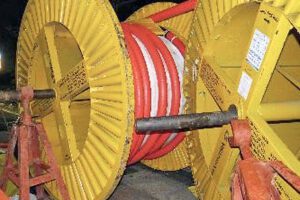With the Western Australian mining industry involved in multiple fatal incidents since the beginning of the year, what are your thoughts on the current safety culture?
Health and safety continues to be the highest priority of the resources sector and every company wants to make sure their employees go home at the end of the day in the same condition they arrived. Recent tragic incidents are a reminder the health and safety job is never over and is just as critical today as ever.
In 2012 the resource industry experienced a fatality free year. After ten years of a steady decline in fatalities coupled with steady growth in employment in the sector, 2012 is a glowing example of an industry aspiring to be incident and injury free.
How do you think events like the WA Surface Mine Emergency Response Competition impact the risk of injury and death in the industry?
CME holds two emergency response competitions in Kalgoorlie each year to provide an event which is both a training and development opportunity, as well as a celebration of the commitment of mines rescue teams and personnel. While we all hope their skills are never put to test in real life, it is a great comfort to know they are there and ready to respond should a disaster occur.
The events also generate strong publicity in the region and have the broader impact of raising awareness across industry and the community of the risks associated with our industry and critical importance of highly skilled emergency response teams.
In what ways are mine rescue competitions beneficial to those participating?
One of the unique aspects of the CME surface and underground competition is that these events are held at mine sites, which allows contestants to put their skills to the test in close to real-life environments. As an observer, the scenarios such as fire fighting, first aid, rope rescue, team skills, confined space rescue, and vehicle extrication and realistic performances from actors playing the ‘victims’ make it easy to feel the pressure and urgency as teams work to respond as quickly and as effectively as possible.
The competition is all about testing skills and knowledge so if an emergency occurs on site, staff are trained to deal with the situation and know exactly what to do under pressure.The practical nature of the challenge is the integral element, ensuring that the competing team members will be able to respond to such conflicts should they occur within a real-life situation.
The events are also a valuable resource to the broader mining community, providing teams with the opportunity to share up-to-date emergency rescue techniques and exchange information and views on safe working environments. The events allow companies to evaluate their knowledge and skills against other companies, and then go away and improve their own safety management systems.
Have there been any changes or improvements to the rescue processes?
Unfortunately, recent incidents in the industry do highlight the importance of having emergency response personnel at the ready, as well as continually working to improve the effectiveness of emergency response processes.
Emergency response is an area where continuous improvement is, of course, always a focus and events such as the CME emergency response competitions are just one mechanism for companies to further develop and fine tune these skills.
When an incident does occur, positive and effective communication is critical to ensure help is mobilised quickly and the impact of the event is minimised as far as possible. The Emergency Response Competition Incident Management Scenario puts the mine manager’s communication and coordination skills to the test by putting them in the ‘control centre’ during a hypothetical event. Participants note while they hope to never be in that position the scenario provides a real insight into how to better manage these responses.
What is the CME’s strategy to improve health and safety?
To ensure safety remains at the forefront of everything the industry does, CME hosts a range of health and safety forums which facilitate access to best practice information, raise awareness of hazards, encourage the sharing of lessons learned, and acknowledge innovative solutions.
The Safety and Health Innovation Awards, presented annually by CME, recognises individuals, teams and companies who have developed new solutions to specific health and safety problems in the workplace.The CME Conference is a leading resources sector event which will provide delegates with up-to-date information from leading international, national and local industry experts and specialists. The diverse and progressive conference program will offer new and innovative insights into developing resilient safety cultures, promoting workforce wellbeing, approaches to regulation and safety management systems as well as examining the role of leadership within high risk industries.
What major technological changes/innovations are in store for the mining industry to improve health and safety?
Looking ahead, industry is proactively finding ways to do things better. New technologies are providing ways to remove the employees from high-risk situations and innovative solutions to hazard elimination are making dangerous jobs safer.
However, as we look to introduce new ways of doing things it is critical the transition is well managed and communicated. You can never completely ‘engineer out’ the need for a vigilant workforce. CME has recently been working with the Department of Mines and Petroleum to finalise a Code of Practice for the safe operation of mobile autonomous equipment. The Code also includes a good practice guide to assist companies considering introducing this type of technology into their operations.
With mining equipment and machinery often imported from overseas – what is being done to ensure this equipment meets the safety standards required on a mine site?
Unless a specific exemption is granted from the regulator, equipment manufacturers and importers must adhere to strict safety standards. The mines safety regulations, for example, require certain types of plant designed for use on mine site to be designed to the relevant Australian Standard, this includes equipment being manufactured outside of Australia and imported. This type of plant also must be registered with the State Mining Engineers before it can be used on a mine site to ensure the design and manufacture is to standard and will not pose a risk to health and safety.
What are your personal beliefs/feelings on health and safety in the mining industry?
Workplace health and safety is absolutely critical and something that everyone in industry is working hard to get right. It’s a job which is never truly finished but requires persistence and innovation to keep improving. There is a clear imperative for us all to work together in this, to share information and learn from past mistakes to make sure everyone can go home safely at the end of the day.
ADRIENNE LABOMBARD
Manager – Workplace Safety and Health, CME
Adrienne LaBombard joined CME’s enviroment portfolio in September, 2012, and was appointed to manage the Workplace Health and Safety portfolio in December, 2013.
Previously, Adrienne worked with the strategic policy team at the Department of the Premier and Cabinet, and brings a background in State and Commonwealth government policy, processes and legislation.
She holds a Bachelor of Arts (Linguistics and Psychology) and a Masters of Arts (Asian Studies), and is currently studying Occupational Health and Safety Management.













Add Comment